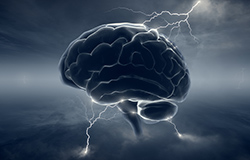Automatic reliance on learned lessons can stifle creativity – think out of the box!
Much of our daily functioning relies on our stock of experiences being stored and categorised, teaching us how to identify patterns. Over time we learn appropriate rules with which to respond to given scenarios. This cognitive mechanism usually works so reliably and efficiently, that it is perceived to be almost automatic. However, the system is based on a set of assumptions and its weakness is exposed when we are required to respond to an unfamiliar situation, demanding a more creative, problem solving approach. As the authors of a study recently published in the journal, 'Scientific Reports', outline, the problem with learned rules is that they, ‘Constrain our reasoning space to a number of manageable possibilities subsequently leading to a mental impasse: we get stuck, run out of ideas and are unable to think of a new solution.’ Drawing on the EU-funded CREAM project's work, the study utilised electrical brain stimulation techniques prompting participants to more readily ‘think outside the box’. Disrupting the reliance on learned lessons Given the role that the brain’s dorsolateral prefrontal cortex (DLPFC) plays in identifying contextual clues and then matching scenarios to learned rules, the authors of the study hypothesised that inhibiting the DLPFC region might help constrain these rules. To modulate the stimulation of the DLPFC, the researchers passed an electrical current over the participants’ scalps through electrodes soaked in saline – a technique known as transcranial direct current stimulation (tDCS). What determined the temporarily stimulation or suppression of the DLPFC was the direction in which the current flowed. To avoid any injury or discomfort, the current was weak, while still remaining constant. The 60 study participants were assigned problem solving tasks (matchstick arithmetic problems) and tested on their ability both before and after one of three randomly assigned test conditions. These conditions were where the DLPFC was: suppressed, activated, and unstimulated. In all there were four types of problem solving tasks, differentiated by the degree to which they required ‘constraint relaxation’, in other words, ‘harder’ in that they required more creative thinking. Out of the three conditions, the researchers found that participants whose DLPFC was temporarily suppressed were best able to solve harder problems, supporting the theory that disrupting the reliance on learned lessons increases receptiveness to a wider range of creative approaches. One caveat is that the study also found that with those participants with temporarily DLPFC suppression performed worse in problem solving which exacted a higher working memory load (when the mind needs to store and access many items simultaneously). In this case participants seemed to have been forced to approach the tasks through trial and error, as they had lost ready access to their pattern recognition and associated learned rules. Investigating creativity as a process not a product The CREAM (CReativity Enhancement through Advanced brain Mapping and stimulation) researchers have previously pointed out that due to its multifaceted nature, creativity is almost impossible to define, much less accurately measure. Therefore, the project’s approach has been to view creativity as an active process, rather than a destination or final product, where value is accorded by many extraneous cultural and social influences. The CREAM project has tapped ICT advancements, such as cheap computing power, high-performance software and sensor systems, to measure the functional activity of the brain and to compute, in real-time, stimuli that can be applied to the brain to train and modify it. For more information, please see: project website
Countries
Italy



